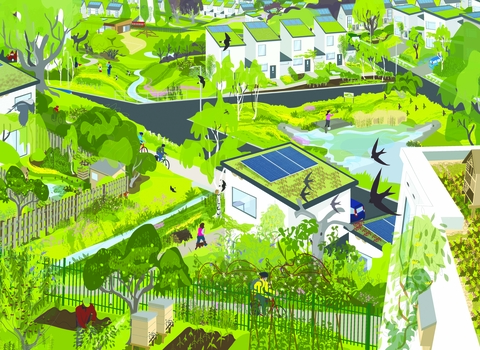The Mitigation Hierarchy
We expect all developments to meet the highest planning standards and follow the Mitigation Hierarchy of avoid, minimise, compensate and enhance to ensure that significant natural environment impacts are avoided.
Avoid - Avoiding any loss or damage of wildlife sites or to protected / rare species - new housing must not damage or destroy important national and Local Wildlife Sites. Our natural environment is finite. These sites are remnants of a rich past and essential to our future.
Minimise/mitigate - Impacts considered unavoidable should be mitigated at the site where the impact occurs if at all possible.
Designing in existing habitats - new housing must work with as much existing habitat as possible. For example, retaining existing woods, copses, hedges and streams as integral parts of new developments, and enhancing and managing them.
Compensate/restore - Any remaining significant biodiversity loss should be compensated for, as close to the area of loss as possible.
Improve degraded ecosystems / return an area to original ecosystem including creating new habitat - habitat creation should be a standard feature of all new housing development, wherever it is.
Net gain - More than compensating for any habitat that is lost - where damage to existing habitats is unavoidable, mitigation must bring about an overall gain in habitats. This should be assessed objectively using an improved version of the Defra biodiversity metric.
Biodiversity Net Gain
The Environment Bill, when passed, will also require all developments to demonstrate a minimum of 10% Biodiversity Net Gain in order to get planning permission. Biodiversity Net Gain requires a development to leave biodiversity (nature) in a better state than before. Developers must increase and improve natural habitat and ecological features beyond the impact of the development. It is hoped this will help to restore ecological networks.

